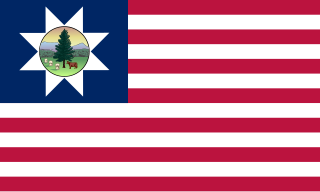 W
WThe 2nd Vermont Brigade was an infantry brigade in the Union Army of the Potomac during the American Civil War.
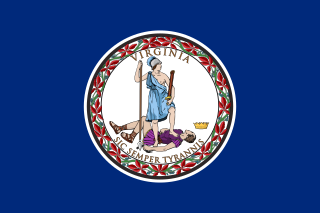 W
WThe 8th Virginia Infantry Regiment was a Confederate infantry regiment raised by Colonel Eppa Hunton in Leesburg, Virginia on May 8, 1861. The unit comprised six companies from Loudoun, two companies from Fauquier, one company from Fairfax and one company from Prince William. Initial regimental officers included: Lt. Colonel Charles B. Tebbs, Major Norborne Berkeley, John M. Orr - Quartermaster, Dr. Richard H. Edwards - Surgeon, Charles F. Linthicum - Chaplain. After Eppa Hunton's promotion to brigadier general in August 1863, in part based on his valor during the Battle of Gettysburg, particularly during Pickett's Charge, Norborne Berkeley was promoted to command the 8th Virginia, and his brother Edmund became the Lieut. Colonel, his brother William Berkeley, Major, and Charles Berkeley became the senior Captain of what then became known as the "Berkeley Regiment."Nonetheless, Norborne, William and Charles Berkeley were all in Union prisoner of war camps and their brother Edmund still recovering from his Gettysburg wound on August 9.
 W
WThe 16th New York Cavalry Regiment was a cavalry regiment that served in the Union Army during the American Civil War. A detachment of the 16th New York had the distinction of killing Lincoln assassin John Wilkes Booth and apprehending accomplice David Herold.
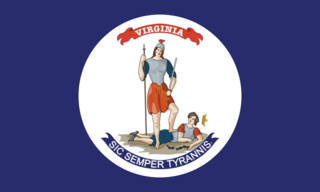 W
WThe 17th Virginia Infantry Regiment was an infantry regiment raised in Virginia for service in the Confederate States Army during the American Civil War. It fought mostly with the Army of Northern Virginia.
 W
WThe 43rd Virginia Cavalry Battalion, also known as Mosby's Rangers, Mosby's Raiders, or Mosby's Men, was a battalion of partisan cavalry in the Confederate Army during the American Civil War. Noted for their lightning strike raids on Union targets and their ability to consistently elude pursuit, the Rangers disrupted Union communications and supply lines.
 W
WThe 45th New York Infantry Regiment, also known as the 5th German Rifles, was an infantry regiment that served in the Union Army during the American Civil War. It was composed almost entirely of German immigrants. Formed approximately five months after the start of hostilities, the unit's service spanned almost the entirety of the war, and it saw action in several of the war's noteworthy battles, in both the Eastern and Western Theaters.
 W
WBailey's Crossroads is a census-designated place (CDP) in Fairfax County, Virginia, United States. The population was 23,643 at the 2010 census. Bailey's Crossroads lies at the crossroads of State Route 7 and State Route 244.
 W
WClarissa Harlowe Barton was an American nurse who founded the American Red Cross. She was a hospital nurse in the American Civil War, a teacher, and a patent clerk. Since nursing education was not then very formalized and she did not attend nursing school, she provided self-taught nursing care. Barton is noteworthy for doing humanitarian work and civil rights advocacy at a time before women had the right to vote. She was inducted into the National Women's Hall of Fame in 1973.
 W
WThe Battle of Blackburn's Ford took place on July 18, 1861, in the Confederate state of Virginia, as part of the Manassas campaign of the American Civil War. Union general Irvin McDowell's Army of Northeastern Virginia was marching south towards the Confederate capitol of Richmond, and encountered the Confederate Army of the Potomac under the command of P. G. T. Beauregard. McDowell sent troops from Daniel Tyler's division to probe the Confederate defenses along Bull Run Creek to locate the Confederate left flank. At Blackburn's Ford, the Union troops attempted to cross but Confederate fire broke up the attack. The repulse at Blackburn's Ford led McDowell to seek to attack the Confederates at a different point along their line, leading to the First Battle of Bull Run days later.
 W
WThe Second Battle of Bull Run or Battle of Second Manassas was fought August 29–30, 1862, in Prince William County, Virginia, as part of the American Civil War. It was the culmination of the Northern Virginia Campaign waged by Confederate Gen. Robert E. Lee's Army of Northern Virginia against Union Maj. Gen. John Pope's Army of Virginia, and a battle of much larger scale and numbers than the First Battle of Bull Run fought on July 21, 1861 on the same ground.
 W
WBurke is an unincorporated section of Fairfax County, Virginia, United States traditionally defined as the area served by the Burke post office. Burke includes two census-designated places: The Burke CDP, population 41,055 in 2010 and the Burke Centre CDP, population 17,326.
 W
WThe Centreville Military Railroad was a 5.5-mile (8.9 km) spur running from the Orange and Alexandria Railroad east of Manassas Junction across Bull Run and up the south side of the Centreville Plateau. Built by the Confederate States Army between November 1861 and February 1862, it was the first exclusively military railroad. Ultimately, the Centreville Military Railroad reached a point near a modern McDonald's restaurant on Virginia State Route 28, south of the modern junction with U.S. Route 29 in Virginia.
 W
WThe Battle of Chantilly took place on September 1, 1862, in Fairfax County, Virginia, as the concluding battle of the Northern Virginia Campaign of the American Civil War. Thomas J. "Stonewall" Jackson's corps of the Army of Northern Virginia attempted to cut off the line of retreat of the Union Army of Virginia following the Second Battle of Bull Run but was attacked by two Union divisions. During the ensuing battle, Union division commanders Isaac Stevens and Philip Kearny were both killed, but the Union attack halted Jackson's advance.
 W
WClarens or the Clarens Estate is a 19th-century Federal-style mansion in Alexandria, Virginia. Clarens is best known as the residence of James Murray Mason, a United States Representative and United States Senator from Virginia and grandson of George Mason, a Founding Father of the United States.
 W
WColvin Run Mill is in Great Falls, Virginia. Built c. 1811, Colvin Run Mill is the sole surviving operational 19th-century water-powered mill in the Washington, D.C. metropolitan area, and its restored mechanism is a nationally significant example of automated technologies pioneered in milling and later adopted across American industry. Down the gravel path of the park is the miller's house, home to the families who ran the mill. In 1883, Addison Millard moved his family here when he bought the old mill. Addison, his wife Emma, and some of their 20 children lived there. When Addison died, the family stayed and operated the mill until 1934.
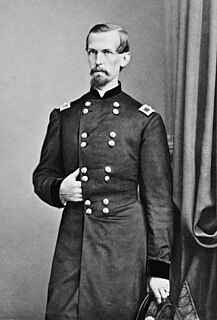 W
WMichael Corcoran was an Irish American general in the Union Army during the American Civil War and a close confidant of President Abraham Lincoln. As its colonel, he led the 69th New York Regiment to Washington, D.C. and was one of the first to serve in the defense of Washington by building Fort Corcoran. He then led the 69th into action at the First Battle of Bull Run. After promotion to brigadier general, he left the 69th and formed the Corcoran Legion, consisting of at least five other New York regiments.
 W
WThe Battle of Dranesville was a small battle during the American Civil War that took place between Confederate forces under Brigadier General J. E. B. Stuart and Union forces under Brigadier General Edward O. C. Ord on December 20, 1861, in Fairfax County, Virginia, as part of Major General George B. McClellan's operations in northern Virginia. The two forces on similar winter time patrols encountered and engaged one another in the crossroads village of Dranesville. The battle resulted in a Union victory.
 W
WThe Battle of Fairfax Court House was the first land engagement of the American Civil War with fatal casualties. On June 1, 1861, a Union scouting party clashed with the local militia in the village of Fairfax, Virginia, resulting in the first deaths in action, and the first wounding of a field-grade officer.
 W
WThe Battle of Fairfax Court House was fought during the Gettysburg Campaign of the American Civil War between two cavalry detachments from the Union Army of the Potomac, commanded by General Joseph Hooker, and the Confederate Army of Northern Virginia, commanded by General Robert E. Lee.
 W
WThe First Battle of Bull Run, also known as the Battle of First Manassas, was the first major battle of the American Civil War. The battle was fought on July 21, 1861, in Prince William County, Virginia, just north of the city of Manassas and about 30 miles west-southwest of Washington, D.C. The Union's forces were slow in positioning themselves, allowing Confederate reinforcements time to arrive by rail. Each side had about 18,000 poorly trained and poorly led troops in their first battle. It was a Confederate victory, followed by a disorganized retreat of the Union forces.
 W
WThe Manassas campaign was a series of military engagements in the Eastern Theater of the American Civil War.
 W
WAntonia Ford Willard was a volunteer civilian spy for the Confederate States Army during the American Civil War.
 W
WFort Lyon was a timber and earthwork fortification constructed south of Alexandria, Virginia as part of the defenses of Washington, D.C. during the American Civil War. Built in the weeks following the Union defeat at Bull Run, Fort Lyon was situated on Ballenger's Hill south of Hunting Creek, and Cameron Run, near Mount Eagle. From its position on one of the highest points south of Alexandria, the fort overlooked Telegraph Road, the Columbia Turnpike, the Orange and Alexandria Railroad, the Little River Turnpike, and the southern approaches to the city of Alexandria, the largest settlement in Union-occupied Northern Virginia.
 W
WFort Marcy Park is a public park located in unincorporated McLean, Virginia, in Fairfax County. It is administered by the National Park Service as part of the George Washington Memorial Parkway.
 W
WHuntley, also known as Historic Huntley or Huntley Hall is an early 19th-century Federal-style villa and farm in the Hybla Valley area of Fairfax County, Virginia. The house sits on a hill overlooking Huntley Meadows Park to the south. The estate is best known as the country residence of Thomson Francis Mason, grandson of George Mason of nearby Gunston Hall. It is listed on the National Register of Historic Places (NRHP), the Virginia Landmarks Register (VLR), and the Fairfax County Inventory of Historic Sites.
 W
WLewinsville is an unincorporated community in Fairfax County, Virginia, United States. Traditionally, the center of Lewinsville has been located at the crossroads of Lewinsville and Chain Bridge Roads. Together with Langley, Lewinsville forms the census-designated place of McLean.
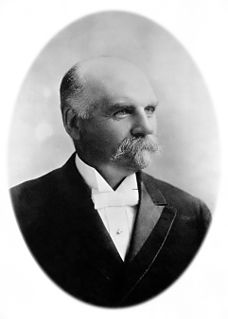 W
WThaddeus Sobieski Constantine Lowe, also known as Professor T. S. C. Lowe, was an American Civil War aeronaut, scientist and inventor, mostly self-educated in the fields of chemistry, meteorology, and aeronautics, and the father of military aerial reconnaissance in the United States. By the late 1850s he was well known for his advanced theories in the meteorological sciences as well as his balloon building. Among his aspirations were plans for a transatlantic flight.
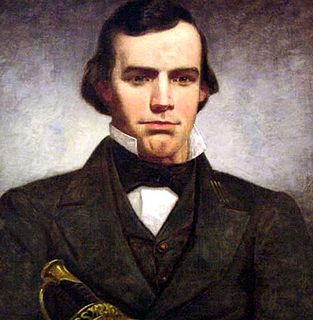 W
WJohn Quincy Marr was a Virginia militia company captain and the first Confederate soldier killed by a Union soldier in combat during the American Civil War. Marr was killed at the Battle of Fairfax Court House, Virginia on June 1, 1861. Previously one of Fauquier County's two delegates to the Virginia Secession Convention of 1861, Marr initially opposed his state's secession from the Union but ultimately supported secession, as did voters shortly before his fatal skirmish.
 W
WMinor's Hill is a geographic eminence located in the western tip of Arlington County, Virginia. Its summit rises to 459 feet above sea level which makes it the highest point in the county. The hill is named after a man named George Minor who lived there at the time of the American Revolutionary War.
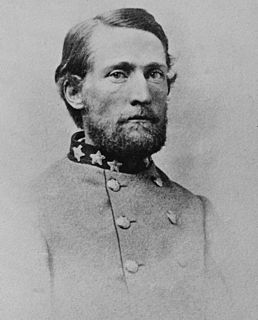 W
WJohn Singleton Mosby, also known by his nickname, the "Gray Ghost", was a Confederate army cavalry battalion commander in the American Civil War. His command, the 43rd Battalion, Virginia Cavalry, known as Mosby's Rangers or Mosby's Raiders, was a partisan ranger unit noted for its lightning-quick raids and its ability to elude Union Army pursuers and disappear, blending in with local farmers and townsmen. The area of northern central Virginia in which Mosby operated with impunity was known during the war and ever since as Mosby's Confederacy. After the war, Mosby became a Republican and worked as an attorney, supporting his former enemy's commander, U.S. President Ulysses S. Grant. He also served as the American consul to Hong Kong and in the U.S. Department of Justice.
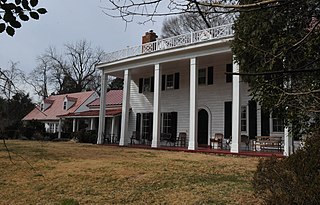 W
WOak Hill in Annandale, Virginia is a Georgian style home built in 1790. It was listed on the National Register of Historic Places in 2004.
 W
WOssian Hall was an 18th-century plantation house in Annandale, Fairfax County, Virginia. Ossian Hall was one of three large residences, along with Oak Hill, and Ravensworth, owned by the Fitzhugh family in Fairfax County.
 W
WOx Hill Battlefield Park is a site in Fairfax, Virginia, where the Battle of Ox Hill was fought during the American Civil War. It was the only major battle of the war fought in Fairfax County. The battlefield is now a public park adjacent to suburban developments and the Fairfax Towne Center shopping center, and is maintained by the Fairfax County Park Authority.
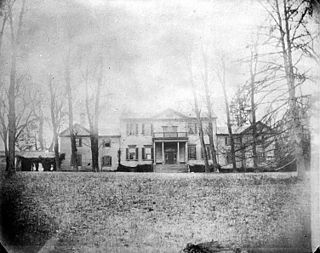 W
WRavensworth was an 18th-century plantation house near Annandale in Fairfax County, Virginia. Ravensworth was the Northern Virginia residence of William Fitzhugh, William Henry Fitzhugh, Mary Lee Fitzhugh Custis, William Henry Fitzhugh Lee and George Washington Custis Lee. It was built in 1796.
 W
WSt. Mary's Church is a historic Catholic church in the eastern United States, at Fairfax Station, Virginia, a suburb southwest of Washington, D.C. Built 163 years ago in 1858, it is a rectangular, one-story, gable-front, frame structure in the Gothic Revival style. It has a steeple at the entrance and a large Gothic arched window over the entrance door. St. Mary's was the first Catholic church built within Fairfax County, and its early parishioners were primarily Irish immigrants employed by the Orange and Alexandria Railroad.
 W
WEdwin Henry Stoughton, was appointed a brigadier general in the Union Army during the American Civil War but his appointment expired after it was not confirmed by the U.S. Senate. Four days later, on March 8, 1863, he was captured by Confederate partisan ranger John S. Mosby while asleep at his headquarters in the Virginia village of Fairfax Court House. The incident became well known and Stoughton became an object of ridicule as a result. He was included in a prisoner exchange two months later, but resigned his commission after he was not reappointed as a brigadier general.
 W
WTaylor's Tavern was a significant outpost for Union Forces during the US Civil War. It was among the first locations in Virginia where the two opposing sides came into contact. The tavern was probably built about 1800 near the site of an old Indian trading post at Seven Corners.
 W
WThe Battle of Vienna, Virginia was a minor engagement between Union and Confederate forces on June 17, 1861, during the early days of the American Civil War.
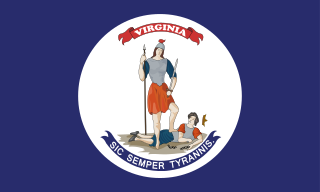 W
WVirginia became a prominent part of the Confederacy when it joined during the American Civil War. As a Southern slave-holding state, Virginia held the state convention to deal with the secession crisis, and voted against secession on April 4, 1861. Opinion shifted after April 15, when U.S. President Abraham Lincoln called for troops from all states still in the Union to put down the rebellion, following the capture of Fort Sumter. The Virginia convention voted to declare secession from the Union on April 17. A Unionist government was established in Wheeling and the new state of West Virginia was created by an act of Congress from 50 counties of western Virginia, making it the only state to lose territory as a consequence of the war.
 W
WBuilt in 1835, the William Gunnell House is a contributing property of the City of Fairfax Historic District. The building, at 10520 Main Street, was the location of Confederate John S. Mosby's raid on Union forces on March 9, 1863.
 W
WWolf Run Shoals was an important crossing point on the Occoquan River in northern Virginia between Alexandria and Richmond during the 18th and 19th centuries. It consisted of three islands and a mill, now submerged under the Occoquan due to higher water levels following damming for flood control, water supply, and power generation. It is located near the unincorporated communities of Butts Corner, Makleys Corner, and Farrs Corner in southern Fairfax County, Virginia.
 W
WXXII Corps was a corps in the Union Army during the American Civil War. It was created on February 2, 1863, to consist of all troops garrisoned in Washington, D.C., and included three infantry divisions and one of cavalry. Many of its units were transferred to the Army of the Potomac during Grant's Overland Campaign.